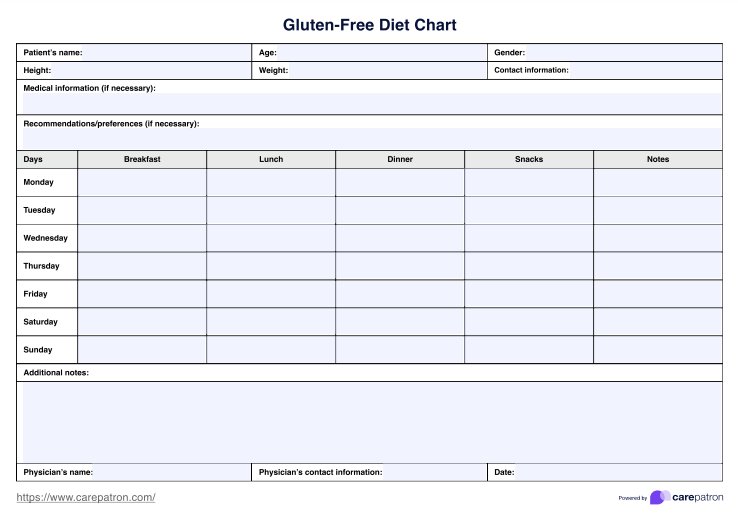A Gluten-Free Diet Chart is commonly requested by individuals diagnosed with celiac disease or gluten sensitivity, who must strictly avoid gluten in their diet. Health enthusiasts exploring gluten-free eating for potential health benefits also show interest in these charts.
Dietitians, nutritionists, and health coaches often use these charts to assist their clients in meal planning and ensuring a balanced, gluten-free diet. Parents of children with gluten sensitivities or allergies also seek out these charts to help plan family meals that are safe and nutritious for their children.












